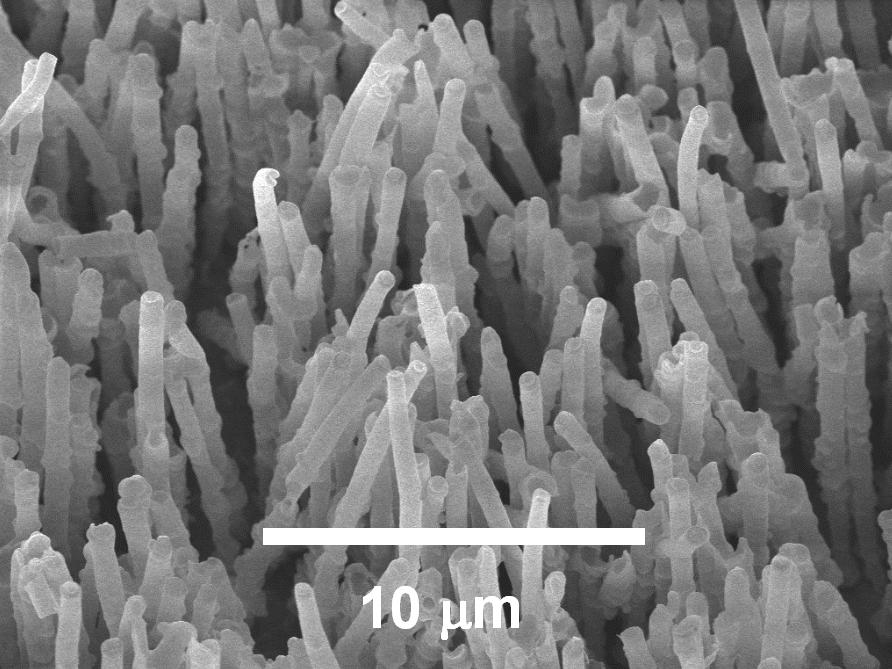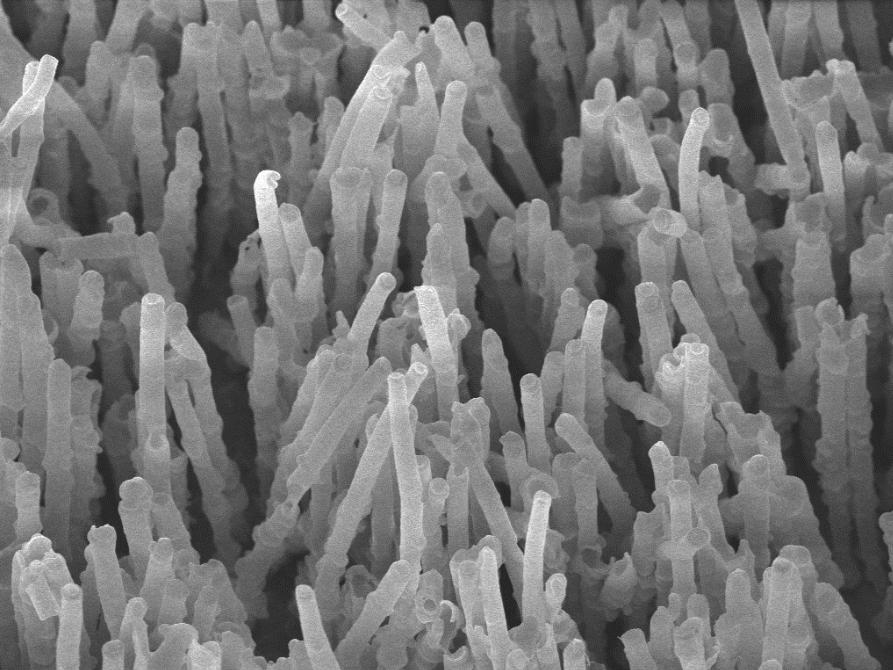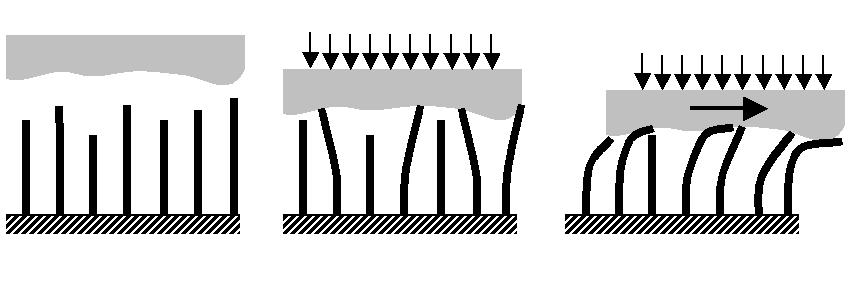Publicity information for:
C. Majidi, R.E.
Groff, Y. Maeno, B. Schubert, S. Baek, B. Bush, R. Maboudian, N. Gravish, M.
Wilkinson, K. Autumn, and R.S. Fearing.
High Friction from a Stiff
Polymer using Micro-Fiber Arrays,
Physical Review Letters,
18 August 2006.
vol. 97, no. 076103
Using
design principles inspired by the nanoscopic hairs on the gecko, UC
Berkeley researchers and colleagues have created a novel microfiber
array which has very high friction but is not ``sticky''. Usual high
friction materials, such as soft rubbers or polymers, are tacky, and
would be uncomfortable on shoe soles (think gum stuck to the bottom of
one's shoe). The high friction micro fiber array works by having tens
of millions of contacts per square centimeter which approximate the
intimate contact soft rubber has with a surface. The microfibers are
made from a rigid plastic which is 100 to 1000 times harder than
rubber, and can resist high temperatures without softening. The
microfiber array has friction which is 10 to 30 times greater than the
friction of the starting plastic.
This novel material could potentially replace soft rubber
on surfaces which need high friction like shoes, tires, or sport gloves.
Point of Contact
Prof. Ronald S. Fearing, UC Berkeley; 510-642-9193;
ronf @ eecs . berkeley . edu
Supported by National Science Foundation and
Defense Advanced Research Projects Agency
Quarter held in place on glass slide by friction force from gecko-inspired
fiber array alone. No adhesive is used to keep quarter from sliding.


Scanning electron microscope picture of synthetic
fibers which are 20 micrometers tall
and 600 nanometers in diameter.
(Microfibers are about 100 times smaller than a human hair.)
There are approximately 40 million fibers per square centimeter
(250 million fibers per square inch).
|

Scanning electron microscope picture of setae from Anolis lizard.
(Picture copyright Kellar Autumn).
Anolis seta are approximately the same size as the synthetic
fiber array.
|

Conceptual drawing showing how microfibers engage with a surface. A
compressive load brings more hairs into contact, increasing true contact area.
Friction increases with true area of contact.
High Friction
Friction is the
force that resists sliding between two surfaces. High friction
materials can prevent sliding under high loads or steep inclines. Such
materials are typically soft and can achieve intimate contact with an opposing
surface. A typical high friction material is rubber, which is used
in a variety of applications such as shoes and tires.
The adhesive system
of gecko lizards also demonstrates high friction. Unlike other high
friction materials, the gecko's adhesive is composed of rigid, durable
material. Intimate contact with an opposing surface is achieved through
the bending of millions of compliant micro-sized hairs called setae.
Gecko-inspired
High Friction
A synthetic
microstructure similar to the gecko adhesive was made by casting plastic into
a porous mold. This procedure yields an array of vertically aligned
polymer fibers that are each less than a micron in diameter and
20 microns high (about one fifth the thickness of a sheet of paper).
As with the gecko
hairs, the polymer fibers are composed of rigid material but exhibit compliance
by bending and buckling when loaded. This compliance enables intimate
contact when pressed into an opposing surface, allowing for the formation of
millions of atomic level bonds. Though individually weak, these bonds
combine to produce a significant resistance to sliding.
Comparing
measurements between the micro fiber array and controls composed of smooth
(unstructured) polymer demonstrate that the gecko-inspired structures resist
over 30 times more force prior to sliding. What is remarkable
is that this 30 times increase in the coefficient of friction is obtained with
an intrinsically rigid material that has much more durable properties than high
friction materials that are soft, such as rubber or sticky tape.
Applications
Inspired by the
gecko's natural adhesive system, we have fabricated a microstructure that
exhibits high friction approaching that of rubber.
Unlike rubber and
other naturally high friction surfaces, this microstructure consists of a rigid
material. In principle, high friction can be achieved in this way for a
wide range of materials, including those that can sustain extreme environmental
and loading conditions such as high temperature and repeated use.
Researchers
Carmel Majidi,
Richard E. Groff, Bryan Schubert, Stanley Baek, and Ronald S. Fearing
Biomimetic Milli
Systems Laboratory
Department of Electrical Engineering & Computer Science
University of California at Berkeley
|
Yohei Maeno
Adhesive
Tape Research Department
Nitto Denko Corporation
Umeda, Osaka, Japan |
Brian Bush
and Roya Maboudian
Department
of Chemical Engineering
University of California at Berkeley |
Nick Gravish,
Matt Wilkinson,
and Kellar Autumn
Department
of Biology
Lewis & Clark College
Portland, Oregon |

